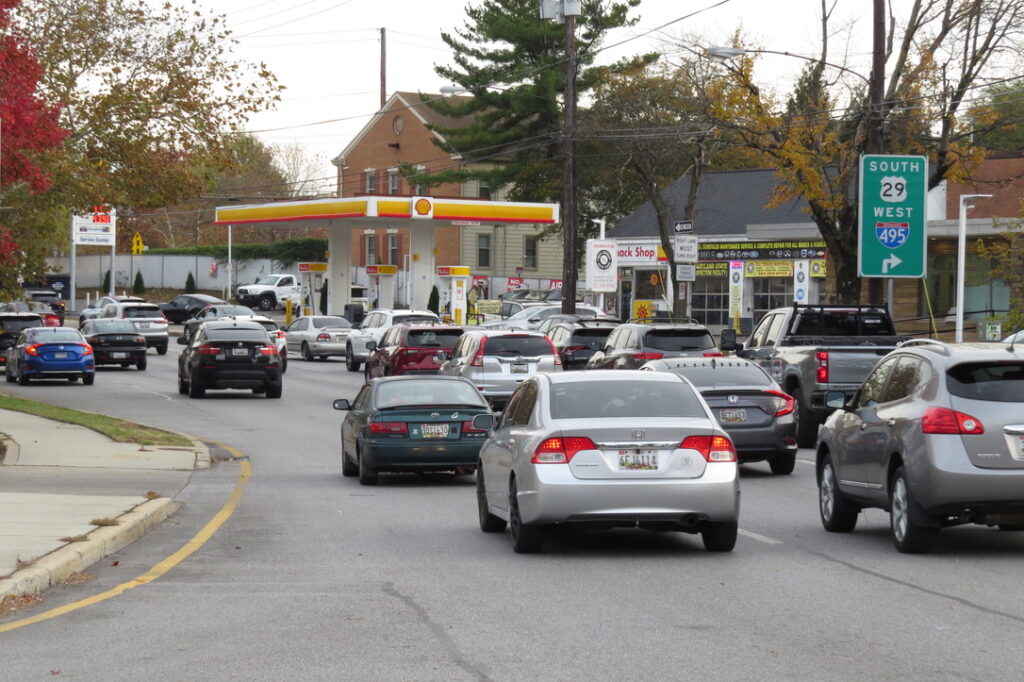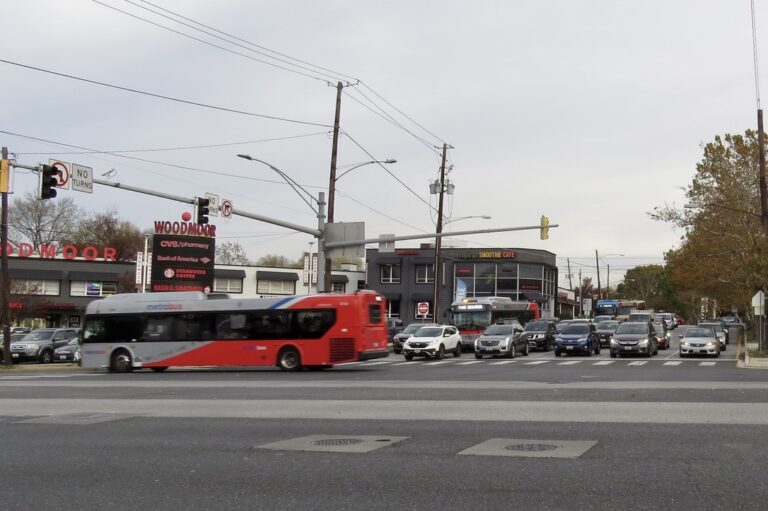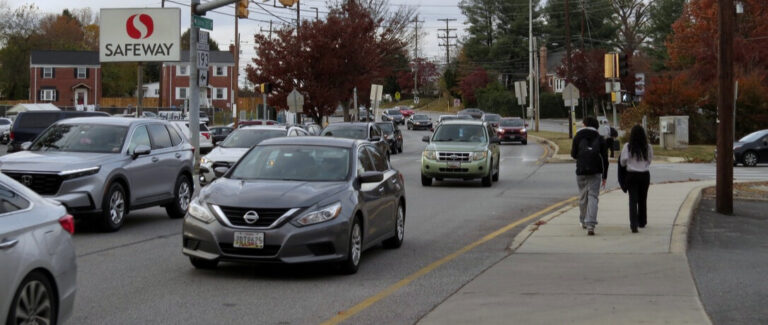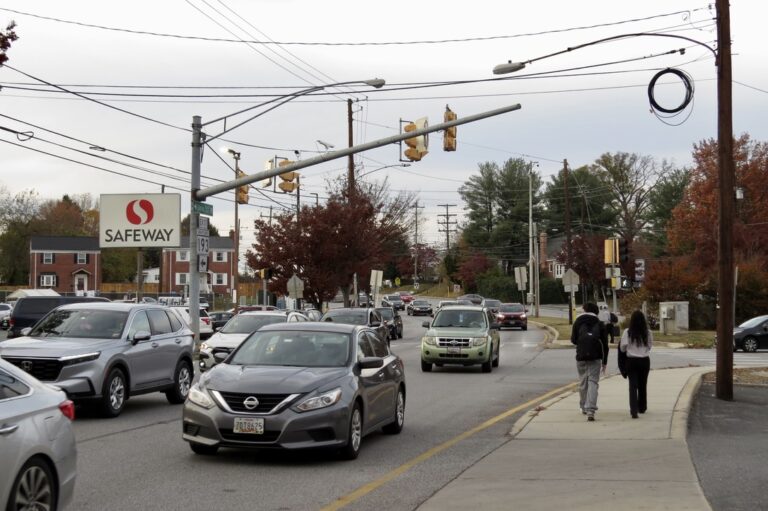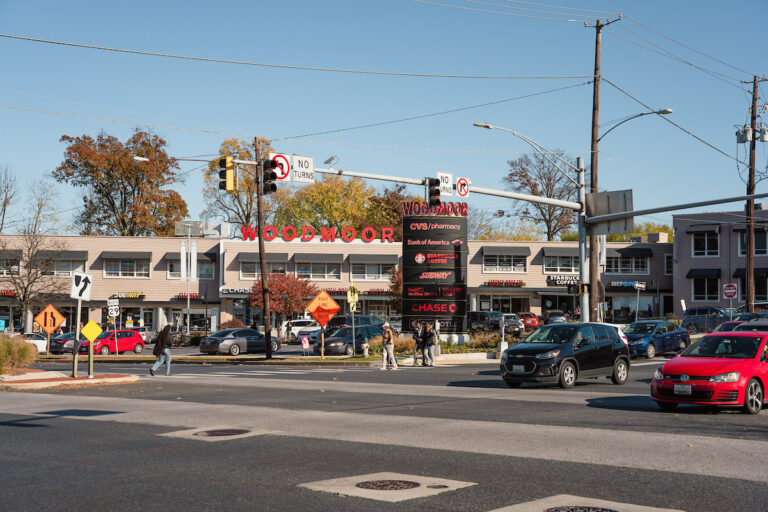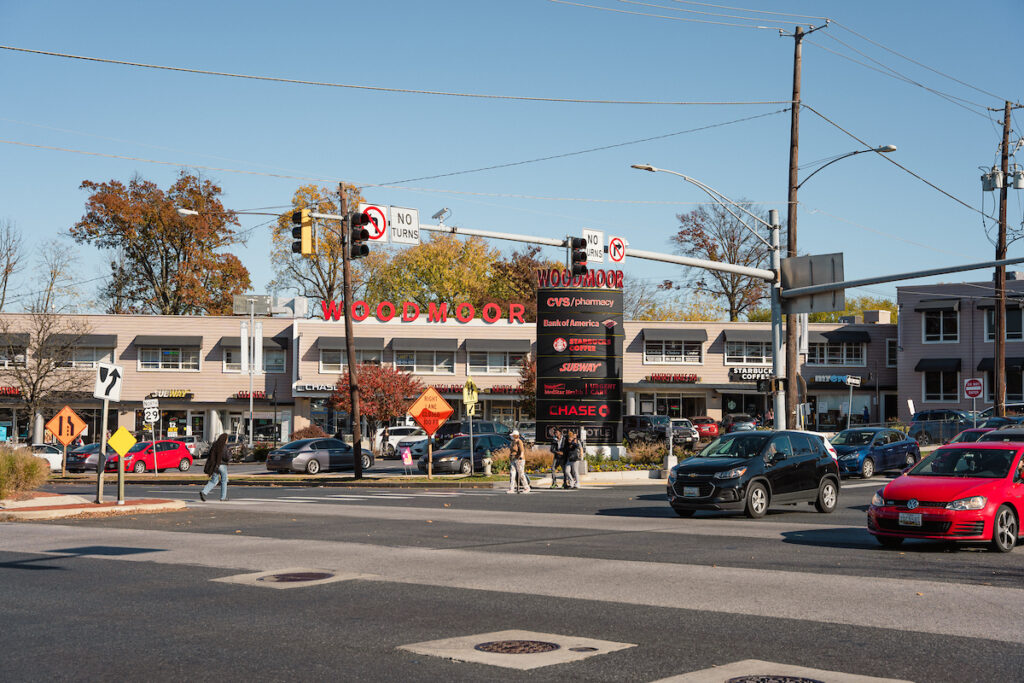
Support safer streets and inclusive housing options in the University Boulevard Corridor Plan
UPDATE, 12/9/25: We won, thanks to your advocacy! The County Council voted 7-3 to approve the University Boulevard Corridor Plan on December 9, 2025. Read more here.
The University Boulevard Corridor Plan envisions a community with safer streets, thriving local businesses, better public transit, and more housing choices to meet people’s needs at all ages and stages of life.
These recommendations bridge the gaps between the challenges our communities have identified today, and what they would like to see in the future: an even more welcoming, sustainable, and thriving community.
Overview & Resources click to open ↓
The University Boulevard Corridor Plan focuses on a three-mile stretch of University Boulevard between I-495 and Wheaton, addressing community needs related to traffic safety, housing, sustainability, and economic development. The plan is part of a larger vision for corridor-focused growth supported by a robust public transit system and a safer transportation network for those walking, biking, rolling, or driving.
For more information about the plan, visit the Planning Department’s landing page. This page has an FAQ about the plan, short explainers, and the full Planning Board draft of the plan. It also has the appendices to the plan, with more information about topics like the outreach and engagement that has been conducted on the plan since Fall 2022, and a glossary of terms.
You can read the full Planning Board draft of the University Boulevard Corridor Plan here.
Land Use, Housing, and Zoning click to open ↓
The University Boulevard Corridor Plan recommends changing zoning to allow for future mixed-use (residential and commercial) development along University Boulevard, and to increase the types of homes it is possible to build in the plan area.
These zoning changes do not mean that all existing buildings or homes will be redeveloped, or that the types of buildings and homes that are currently in the plan area will no longer be allowed.
Rather, these changes reflect the flexibility needed to adapt to changing needs and conditions in the plan area now and in the decades to come—whether that means allowing smaller, more affordable, transit-oriented homes to meet the needs of people of different ages, incomes, and abilities; creating more space for local businesses along the future bus rapid transit (BRT) line; or opening up additional opportunities for subsidized affordable housing.
See the PDFs below for full maps of the proposed zoning changes and the housing chapter of the plan. You can read the full sections on housing and land use in the Planning Board draft of the plan.
Transportation and Safe Streets for Walking & Biking click to open ↓
The University Boulevard corridor has some of the highest Metrobus ridership in Maryland, but the road is also dangerous for pedestrians, bicyclists, and drivers. The University Boulevard Corridor Plan outlines important strategies to make streets safer and easier to navigate for everyone.
To improve transportation safety and connectivity, the University Boulevard Corridor Plan recommends:
- Wider sidewalks with more distance between the sidewalk and the street—including implementing 10-foot sidepaths with 8-foot street buffers along both sides of University Boulevard between Amherst Avenue and Lorain Avenue, and between Lexington Avenue and the I-495 interchange
- More frequent crosswalks on University Boulevard with better lighting and visibility for drivers and pedestrians
- A complete network of connected low-stress bicycle facilities, including a trail connection across I-495 connecting Colesville Road to Indian Spring Terrace Local Park and Marshall Avenue
- Dedicated transit lanes to improve bus service along University Boulevard and Colesville Road
- Consolidating, removing, or relocating driveways from University Boulevard to side streets and alleys, and limiting future driveways to make the road safer for people walking and biking
- Prioritizing safety and calming traffic on neighborhood streets with measures like speed humps and curb extensions
- Making the interchanges with I-495 at Colesville Road and University Boulevard safer, with better lighting, clearer markings, and improved visibility. The plan also includes exploring signalized protected crossings for pedestrians.
All transportation recommendations follow the Complete Streets, Vision Zero, and Thrive Montgomery frameworks.
You can read the full transportation section of the plan below.
Parks & Environment click to open ↓
The University Boulevard Corridor Plan recommends improved bike and pedestrian connections through local parks, and between local parks and adjacent neighborhoods. It also recommends providing more shade options for parkgoers and athletic spectators.
The plan’s environmental recommendations include facilitating fish passage by reconnecting the stream under University Boulevard at Sligo Creek Stream Valley Park, protecting native trees and increasing tree canopy throughout the plan area, noise and pollution mitigation measures along major roads, and reducing heat islands through tree coverage and solar canopies.
You can read the full sections on parks & environmental sustainability below.
Infrastructure & Schools click to open ↓
Montgomery County has a Growth and Infrastructure Policy (sometimes called the ‘GIP’) that applies to all new development. This policy ensures that new development does not move forward if there is not adequate infrastructure, and sets guidelines for how developments must meet infrastructure requirements.
As with any development in the county, any new development that is proposed in the future in the University Boulevard plan area would be subject to the Growth and Infrastructure Policy. The Growth and Infrastructure Policy applies to school capacity, as transportation, water and sewage facilities, and police, fire and health services.
The Growth and Infrastructure Policy was recently underwent its regular update process, and was approved by the Council in November 2024. You can read more about the 2024-28 Growth and Infrastructure Policy here and here, or by viewing the PDF below.
Master plans are about a positive vision for the community. What do you want to see in your community? How do the recommendations of this plan give you hope for the future?
Share your story with the Council about why we need safe streets and more housing options, and ask them to support the University Boulevard Corridor Plan.
Photo credit at top: Montgomery Planning

